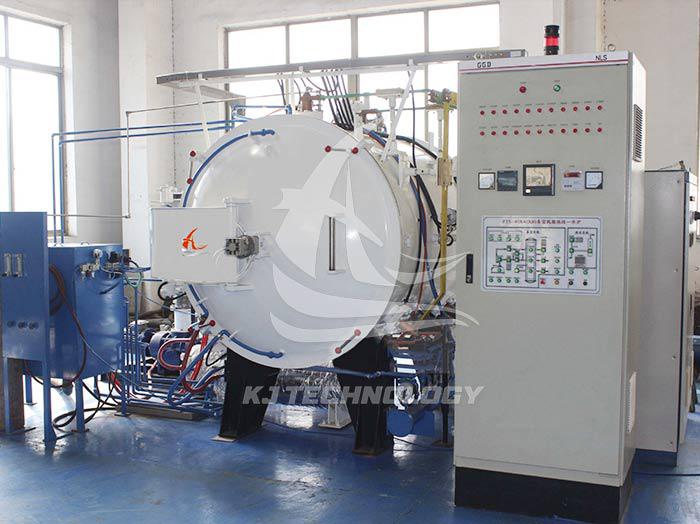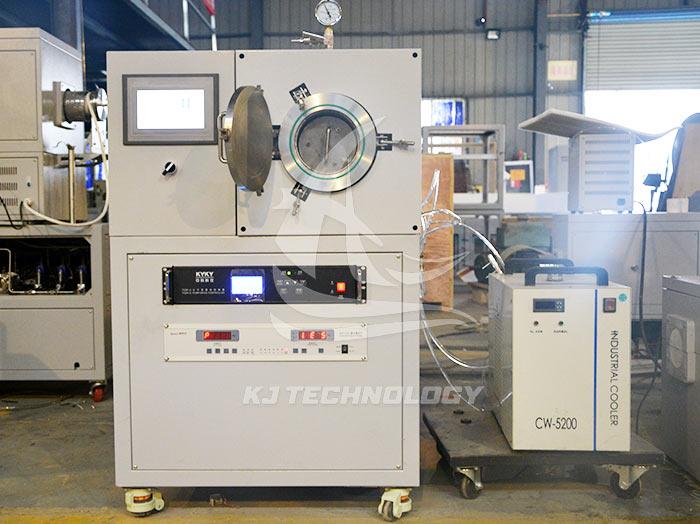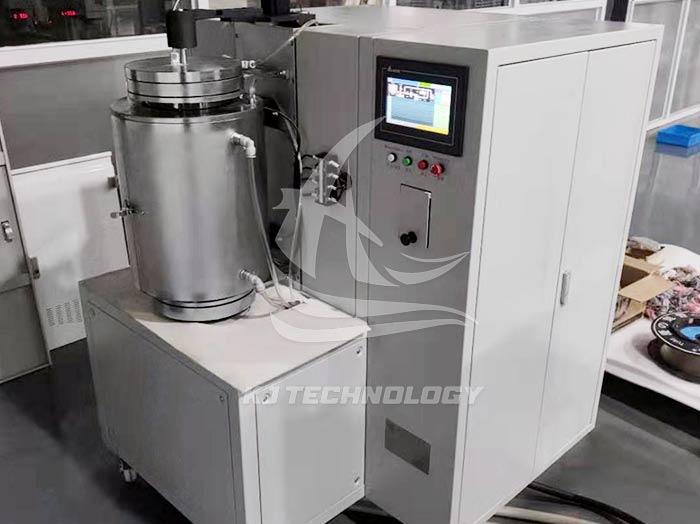Can a vacuum graphite high-temperature furnace be used for sintering?
 11-06-2025 Author: KJ technology
11-06-2025 Author: KJ technology
The vacuum graphite high-temperature furnace can be fully used for sintering processes and has significant advantages in high-temperature, vacuum or protective atmosphere environments, especially suitable for sintering scenarios with high requirements for material purity, density and performance. The following is a specific analysis:
1. The core advantages of vacuum graphite high-temperature furnace in sintering
High temperature and vacuum environment
Wide temperature range: The furnace temperature of the vacuum graphite high-temperature furnace can reach 1600 ℃ to 2800 ℃, which can meet the sintering needs of most ceramics, metals, and composite materials.
Vacuum conditions: By vacuuming (with a maximum vacuum degree of 5 × 10 ⁻⁶ mbar) or filling inert gases (such as argon and nitrogen), impurities such as oxygen and water vapor in the air can be effectively removed, preventing material oxidation or harmful reactions at high temperatures, thereby improving the purity and performance of the sintered body.
Characteristics of graphite materials
High temperature resistance and chemical stability: Graphite has a melting point of up to 3652 ℃ and is not easily reacted with most metal and ceramic materials at high temperatures, making it suitable as a sintering mold, heating element, or sintering plate.
Excellent thermal conductivity: Graphite has high thermal conductivity and can quickly and uniformly conduct heat, ensuring uniform heating of sintered materials and reducing cracking, deformation, or uneven performance caused by temperature gradients.
Small coefficient of thermal expansion: Graphite is dimensionally stable at high temperatures, which can reduce the stress on the sintered body caused by differences in thermal expansion and improve the yield of finished products.
Precise control and automation
Modern vacuum graphite high-temperature furnaces are equipped with advanced automation control systems (such as PLC+touch screen or upper computer software), which can accurately control key parameters such as temperature, vacuum degree, heating rate, and insulation time, and support multi-stage process program settings to meet the requirements of complex sintering processes.
Some devices also have atmosphere pressure control function, which can achieve vacuum atmosphere linkage operation, further optimizing the sintering environment.
2. Typical application scenarios of vacuum graphite high-temperature furnace in sintering
Ceramic material sintering
High performance ceramics: used for sintering ceramics such as alumina (Al ₂ O ∝), silicon nitride (Si ∝ N ₄), silicon carbide (SiC), zirconia (ZrO ₂), etc., which can significantly improve the density, hardness, wear resistance, and corrosion resistance of materials.
Transparent ceramics: Sintering transparent ceramics such as alumina and yttrium aluminum garnet (YAG) in a vacuum environment to avoid pores and impurities affecting transparency.
Functional ceramics, such as piezoelectric ceramics, ferroelectric ceramics, magnetic ceramics, etc., are improved in electrical and magnetic properties through vacuum sintering.
Metal material sintering
Powder metallurgy: used for sintering metal powders such as iron-based, copper based, nickel based, etc., to prevent oxidation in a vacuum environment and improve the density and mechanical properties of materials.
Refractory metals such as tungsten (W), molybdenum (Mo), tantalum (Ta), etc. can be sintered in vacuum or inert gas to avoid high-temperature oxidation and maintain the purity and properties of the material.
Alloy sintering: such as high-temperature alloys, cobalt based alloys, etc., achieve uniform alloying through vacuum sintering, and improve the high-temperature resistance of materials.
Composite material sintering
Metal ceramic composite materials, such as silicon carbide reinforced aluminum matrix composites (SiC/Al), can be sintered in a vacuum environment to improve interfacial bonding, enhance material strength and wear resistance.
Carbon carbon composite materials: used in aerospace, nuclear energy and other fields, achieving densification and graphitization of carbon fibers through a vacuum graphite high-temperature furnace, improving the thermal conductivity and erosion resistance of the material.
New material research and development
Nano materials: sintering nano powders in vacuum environment can prevent particles from agglomeration, maintain nano structure, and obtain excellent physical and chemical properties.
3D printing materials: used for post-processing sintering of metal 3D printed parts, eliminating pores and residual stresses during the printing process through a vacuum environment, and improving the density and mechanical properties of the parts.
3. Precautions
Material compatibility: It is necessary to ensure that the sintered material does not react with the graphite heating element and mold at high temperatures, in order to avoid corroding graphite components or contaminating materials.
Process parameter optimization: Temperature, vacuum degree, heating rate, insulation time and other parameters need to be adjusted according to material characteristics to achieve the best sintering effect.
Equipment maintenance: Regularly clean the oxide scale, impurities, and volatile substances in the furnace to prevent contamination of workpieces or damage to graphite components; Check the sealing of the vacuum system to ensure that the vacuum level meets the standard.
Safe operation: Wear protective equipment during high-temperature operation to avoid burns; The operation of the vacuum system should follow the regulations to prevent equipment damage caused by sudden pressure changes.








